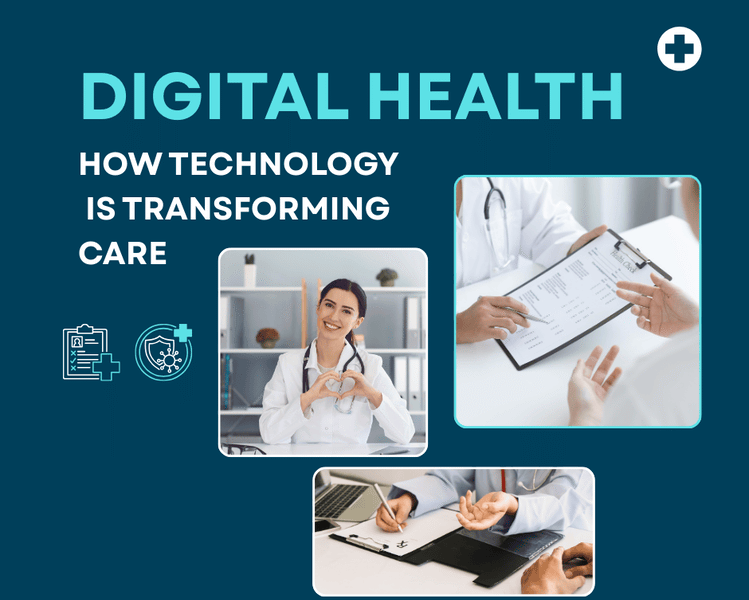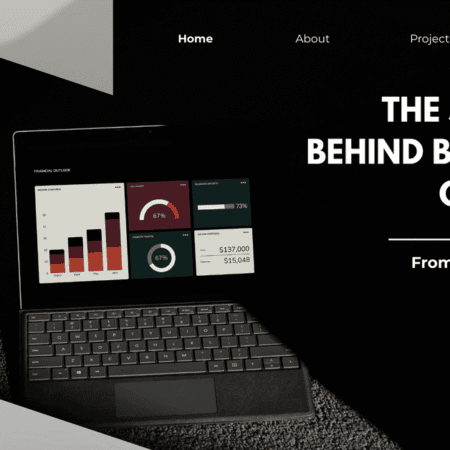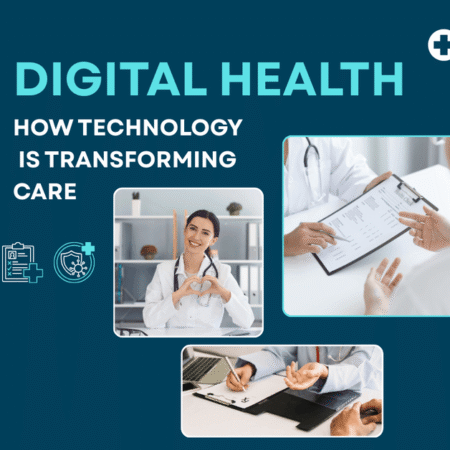The health care industry is experiencing one of the most far-reaching transformations in its history, driven most fundamentally by innovations in digital technology. From wearable sensors that monitor vital signs in real-time to artificial intelligence employed to assist doctors in faster, more accurate diagnoses, digital health is reshaping the delivery and receipt of care. For patients, doctors, and policy makers, this transformation brings with it both promise and its pitfalls. Here in this specializedblog, we talk about how technology is transforming healthcare, the advantages that accrue to it, as well as the challenges that follow.
Understanding Digital Health
Digital health is the use of cutting-edge technologies such as mobile apps, cloud computing, big data, wearable tech, telemedicine, and artificial intelligence to make healthcare delivery better. Its core is to individualize, optimize, and access health care. Unlike traditional medical systems, digital health targets prevention of well-being as well as reactive curative treatment.
As an example, there are apps that allow patients to track blood sugar, heart rate, or even moods of mental well-being. These tools allow patients to manage their health, thus reducing the need for repeated hospitalizations. At the same time, clinicians can use the data to identify risks at an earlier stage and adapt treatment regimens accordingly.
The Rise of Telemedicine
One of the most visible impacts of digital health has been the rise of telemedicine. The COVID-19 pandemic accelerated the adoption of virtual consultations, but the trend is here to stay. Through secure video calls and online platforms, patients can connect with doctors from the comfort of their homes.
Telemedicine increases access, especially for individuals who live in rural areas or those with mobility issues. It reduces waiting times and the expense of healthcare by minimizing unnecessary visits to the hospital. In addition, remote care is presently being combined with remote monitoring equipment, creating a perpetual cycle of patient care.
For instance, a patient with chronic heart disease may employ a smart monitor that transmits real-time heart activity to a cardiologist. Abnormal results can trigger immediate alerts, enabling interventions accordingly. This is an illustration of how technology is transforming therapy.
Wearable Devices and Remote Monitoring
Wearable technology has evolved beyond fitness trackers. Smartwatches, biosensors, and medical devices now can track oxygen levels, sleep, blood pressure, and even recognize abnormal heart rhythms. Wearable devices allow for early detection of potential health issues so that patients can make appropriate lifestyle changes, as well as offer useful inputs to physicians.
Remote monitoring also helps patients with chronic conditions such as diabetes, hypertension, and asthma. In keeping continuous health information, these machines allow clinicians to customize treatment and ensure compliance. Often, patients are more invested in their care, since they can observe their improvement daily.
The personalizedblog view here is clear: medicine is moving from one-size-fits-all to precision medicine. Every morsel of information obtained contributes to the construction of a portrait of the individual’s own health profile.
Artificial Intelligence and Big Data
Artificial intelligence (AI) is playing a critical role in medicine now. Algorithms can scan massive data sets at lighting-fast speeds, identifying patterns that the naked eye cannot detect. Systems driven by AI are being used more and more in radiology to identify tumors, in pathology to analyze lab samples, and even to forecast patient deterioration in intensive care units.
Big data analytics also makes population-level insights possible. When rolled up across thousands of patients, healthcare organizations can establish risk factors, improve disease management strategies, and utilize resources more efficiently.
For example, predictive algorithms using artificial intelligence can predict flu outbreaks or hospital readmissions and allow hospitals to prepare in advance. At the patient end, chatbots and virtual agents based on AI are utilized to answer basic health questions, screen for symptoms, and direct individuals to the right level of care.
Personalized Medicine: Tailoring Care for Each Patient
Perhaps the most exciting aspect of digital health is the advent of personalized medicine. No two individuals are alike, and with genomics, wearables, and artificial intelligence, their treatments can now be tailored to them, not populations.
Genomic sequencing, for instance, allows doctors to learn the patient’s genetic predisposition towards certain illnesses and adjust treatment accordingly. The ultimate example is treating cancer: medications can be selected based on the molecular profile of a tumor, enhancing effectiveness while reducing side effects.
The personalizedblog perspective is one where the future of healthcare is precision. No longer are doctors treating a “typical” patient, they’re treating you. This shift promises better outcomes, increased patient satisfaction, and potentially lower costs in the long run.
Challenges of Digital Health
While the benefits are tremendous, the digitalization of healthcare also poses some obstacles to overcome:
Data Privacy and Security:
Health data is highly sensitive. With more and more information stored digitally, robust cybersecurity must be present. Breaches not only compromise patient trust but potentially have severe consequences for health outcomes.
Digital Divide:
Not all patients can access high-speed internet, smartphones, or basic computer literacy. Failure to close this divide threatens digital health from widening gaps in access to healthcare.
Regulation and Standards:
With new technologies pouring in thick and fast, regulatory bodies must keep pace. Safety, efficacy, and ethical use of computing tools are crucial.
Human Touch:
While technology improves efficiency, it can never replicate the empathy and human touch that healthcare professionals provide. Balance is the secret to successful integration.
The Future of Healthcare
In the years to come, digital health will become even more sophisticated. We can expect:
Merging of AI and robots for surgery and rehabilitation.
Enhanced predictive analytics for preventive care.
Greater use of virtual reality for pain treatment and clinical education.
Greater interoperability between health systems to enable seamless data sharing.
Most importantly, personalization will remain the center stage. Be it via genetic testing, wearable sensors, or artificial intelligence-driven analysis, medicine will maintain its shift towards precision medicine. The model of personalized blog will remain at the forefront of this new disease paradigm, where care is not just created for disease, but for individual.
Conclusion
Digital health is not merely a trend—it is a revolution transforming the delivery and experience of care. From telemedicine and wearables to AI and personalized medicine, technology is creating healthcare that is more proactive, accessible, and personalized.
While challenges such as data privacy, digital divide, and regulatory hurdles remain, the advantages far outweigh the disadvantages. By engaging in responsible diffusion of digital technology, healthcare systems can construct a future wherein care is faster, smarter, and kinder.
As this personalizedblog demonstrates, technology is not replacing healthcare—it is complementing it, so that patients are being treated with care that is as unique as they are.








No Comment! Be the first one.